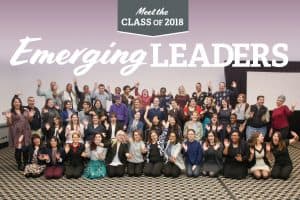
Whether they address literacy, library design, open access, or another equally important topic, dissertations advance knowledge of the LIS field, spur interest in further research, and fuel the design of LIS learning experiences. Their authors use both qualitative and quantitative approaches, conduct interviews and surveys, analyze photos and floor plans, observe library activity, and interpret historical documents, all in the name of informing best practices. Presented here are eight dissertations to inspire the work of school, public, special, and academic librarians.
How were these dissertations selected? Each year I locate and read the many wonderful LIS dissertations out there via university digital archives and online databases. I select dissertations that have practical implications for libraries. Next I look for a variety of methodologies, including quantitative, qualitative, and mixed-methods approaches. Those most relevant to current issues and with measurable recommendations for change are chosen for this article.
The authors and their topics are:
- Jason Kelly Alston (PhD, University of South Carolina, Columbia) explored the experiences of past and current participants in library diversity residencies.
- Anna Carello (EdD, University of Pennsylvania, Philadelphia) studied how library design affects multiple literacy skills in early childhood.
- Ashley Cross (EdD, Pepperdine University, Malibu, California) examined makerspaces in the K–12 school setting.
- Amanda Nichols Hess (PhD, Oakland University, Rochester, Michigan) studied the role of academic librarians as teachers.
- M. Catherine Peters (PhD, State University of New York at Albany) looked at the phenomena of personal digital archiving through the lens of critical realism.
- Sara Quagliaroli (EdD, Johnson and Wales University, Providence, Rhode Island) researched the influence of library leadership on the transformation of academic library spaces.
- Kristen M. Schuster (PhD, University of Missouri, Columbia) explored the experiences of 15 Midwestern communities that built public libraries funded by Andrew Carnegie.
- Ahmet M. Tmava (PhD, University of North Texas, Denton) examined faculty attitudes toward open access institutional repositories.
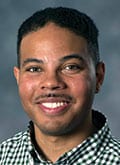
Jason Kelly Alston
PhD, University of South Carolina
Summary: Alston studied the experiences of librarians who participated in a residency librarian work program—a program designed to give recent graduates real work experience with the goal of recruiting and retaining diversity in the library profession. Most diversity residencies are hosted by academic libraries, although OCLC and Los Angeles Public Library also host such residencies. Alston used surveys and in-depth interviews to gather data about recent and past participants in diversity programs. While many residents reported positive work experiences, some challenges emerged. Among the causes of dissatisfaction for the residents were lack of acceptance in the workplace by other staff, lack of guidance from management, and lack of meaningful work. Mentors, a key to resident satisfaction, were not always provided.
Recommendations: Managers of residency programs may increase residents’ satisfaction by formalizing the following recommendations: Other staff need to be made aware of who the residents are and what the purpose of the program is; staff and residents should be given a chance to get to know each other; diversity residents need to know who will provide guidance, such as supervisors or administrators assigned to the project; the people providing guidance should have time to devote to the residents; meaningful and challenging work should be offered; and residents should have support from assigned mentors.

Anna Carello
EdD, University of Pennsylvania
Summary: The ubiquity of electronic devices has called into question the traditional relationship of libraries to print resources. This qualitative research study sought to understand, by examining the role of the library in four separate schools, how young students use libraries to develop digital, informational, tactile, and print literacy. In doing so, Carello explores the question of how libraries should change and grow in response to the digital age.
Recommendations: School administrators facing budget cuts often contemplate closing their school’s library; however, such action has dire implications, as Carello points out. Students rely on libraries and the books therein for glimpses into other life experiences, which in turn have strong implications for identity formation and the development of personal agency. Carello also recommends that school officials familiarize themselves with their school libraries in order to understand their effect on the school’s learning culture; that the definition of literacy include the concept of reading for pleasure; that school librarians and teachers maintain strong lines of communication; and that library media specialists consider putting portable digital tools into the hands of students rather than relying on, for example, a bank of computers that cannot be moved.

Ashley Cross
EdD, Pepperdine University
Summary: Makerspaces are more popular than ever. Makerspaces can empower students to invent, prototype, and tinker with low-cost technology tools such as microcircuits and fabrication tools such as 3D printers.
While they have been studied in other settings such as museums, libraries, and after-school programs, little research has been conducted within the K–12 school day. This exploratory mixed-methods study examined school and participant demographics and makerspace setups, as well as intersections of technology, content, and pedagogy. Cross conducted interviews with selected participants based on diversity of teacher gender, professional background, and school environment. To better understand K–12 makerspace implementation, the study uses a constructivist approach to examine seven characteristics of makerspaces: setting, computational thinking, participant structures, teacher training, gender and racial issues, assessment, and sustainability.
Recommendations: Makerspaces have the potential to enhance learning with constructivist pedagogies. To make their makerspaces successful, classrooms or schools need space allocated for makerspace equipment, supplies, and student work. Librarians are more likely to have makerspace instruction and experience. Professional development for teachers in makerspaces may encourage their development. As with STEM, female teachers and students may be reluctant adopters, and learning experiences designed to encourage adoption could be helpful. The expense of equipment and supplies can be daunting. Yet many makerspaces are begun with inexpensive supplies.

Amanda Nichols Hess
PhD, Oakland University
Summary: Nichols Hess explores the ways in which academic librarians see teaching as a part of their professional identity. Adults yearn to understand and make meaning of experience; without opportunities to do so, they may be unable to experience transformative change. Nichols Hess demonstrates that academic librarians often view themselves as teachers, performing learning tasks in the library and in other campus settings. The transformation into librarian and educator needs the support of library leaders and administration as well as interactions with peers and other faculty. An academic librarian’s identity may also be influenced by work responsibilities, age, graduation dates, and time spent teaching.
Recommendations: Academic librarians can actively pursue opportunities for growth as teachers. Professional workshops and conferences provide both library and pedagogy sessions. Professional development sessions also provide librarians with opportunities to build relationships. Work peers can share professional growth, while supervisors can support and encourage professional development through funding and schedules, and journaling can help process personal and professional growth. Giving back—that is, presenting or publishing about the transformation into librarian as educator—will reinforce professional growth. LIS educators can be mindful of the pedagogical needs of prospective academic librarians.
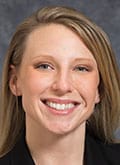
M. Catherine Peters
PhD, State University of New York at Albany
“Personal Digital Archiving in Public Libraries: A Critical Realist Approach”
Summary: It is commonplace for people to save digital photos, recordings, videos, and documents, thus creating personal digital archives. Often people rely on the devices, resources, and training offered at public libraries to complete these tasks. Peters looks at personal digital archiving in public libraries through two case studies. Factors such as internet use policies, acceptable use policies, and how they shape technology access were also considered. She found that while public libraries purport to serve everyone, restrictions apply, based on accepted social and behavioral norms. Structures such as fines, filters, payment for visitor passes, requirements for library cards, library printing, software and reservation software, and time limits can serve as barriers. In addition, mastering privacy functions is a challenge.
Recommendations: Policy restrictions apply to users who may not have steady access to internet-enabled devices or desktop computers for completing personal information management. Librarians and other decision makers need to be aware of how policies and procedures limit access and determine how to change policies and procedures to empower personal digital archiving. Information sessions that demonstrate ways to retrieve, edit, and save personal files and documents in different software will aid users who must employ different workstations. Privacy is both a policy issue and a space issue. The library can design space with privacy in mind for the personal digital archivist.
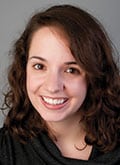
Sara Quagliaroli
EdD, Johnson and Wales University
“Library Leadership Engagement for Transformative Academic Library Spaces”
Summary: Quagliaroli seeks to understand the experience of organizational leaders and their engagement with stakeholders during the creation of library learning spaces. To that end, she interviews library leaders who have led the creation of library learning spaces. By analyzing the interviews, she identifies a framework for a leadership engagement process: (1) input: leadership characteristics and project ignition; (2) project drivers: institutional authority, mission, and needs; (3) building on relational capital; (4) persistence through planned change; and (5) maintaining sustainable spaces. Quagliaroli hopes to contribute to a greater understanding of leadership requirements for library space design projects.
Recommendations: Hire change-oriented librarians who have experience and knowledge of library space design, experience with successful fundraising, the ability to persist through challenges, experience and confidence with evidence-based decision making, and experience building and maintaining collaborative relationships with external stakeholders. Build relationships with institution development officers, create a library Friends group, and start growing relationships before you have a project. Include faculty early in the process to encourage buy-in; foster relationships with administration, deans, and student life personnel; and be able to demonstrate the contribution of the library and library learning spaces to research and teaching.
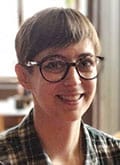
Kristen M. Schuster
PhD, University of Missouri
Summary: Schuster studies the development of Carnegie libraries in the early 20th-century Midwest, using written records, images, blueprints, Carnegie library loan applications, and library literature. Using both broad qualitative data and specific quantitative data, she looks at 15 communities in the Midwest that built libraries thanks to Andrew Carnegie’s financial resources. In contrast to previous work on this topic, Schuster’s dissertation takes into account trends in library history. She also examines the role that professional rhetoric played in the development of these libraries.
Recommendations: Two additional areas of library work are of particular interest: cataloging and services for children. The description and management of collections required librarians to master technical skills that would allow them to build a card catalog. Understanding trends and practices promoted in library training programs will support further investigations into the effects library design had on perceptions of librarians as professionals (and vice versa). Continuing in the vein of investigating how spaces designed to promote literacy and self-improvement affected perceptions of librarians, future research will investigate spaces used for special services or programming.

Ahmet M. Tmava
PhD, University of North Texas
Summary: Many colleges and universities have developed open access institutional repositories (IR) during the past decade, yet a literature search reveals low levels of faculty participation. Tmava uses quantitative and qualitative methods to study faculty needs and attitudes toward open access IRs. Faculty members showed a lack of understanding of open access principles, and almost half of participants were not aware of university open access policy. Many faculty members approve of the principles of open access yet do not participate. The results reveal that faculty intent to deposit work in IRs can be affected by factors such as age, college, rank, and status.
Recommendations: Tmava recommends that IR staff and librarians develop clear and engaging outreach programs. Information from successful open access publishing endeavors could be shared with faculty, for example. Outreach and networking will increase faculty familiarity with open access principles and policies and may serve to encourage faculty use of the IR. He suggests that IR staff and librarians communicate directly with faculty to learn about and address concerns. Needs assessments are useful in determining faculty views about open access and IRs based on the variables of faculty age, college, rank, and status.

 KATHY ROSA is director of ALA’s Library and Research Center.
KATHY ROSA is director of ALA’s Library and Research Center.
